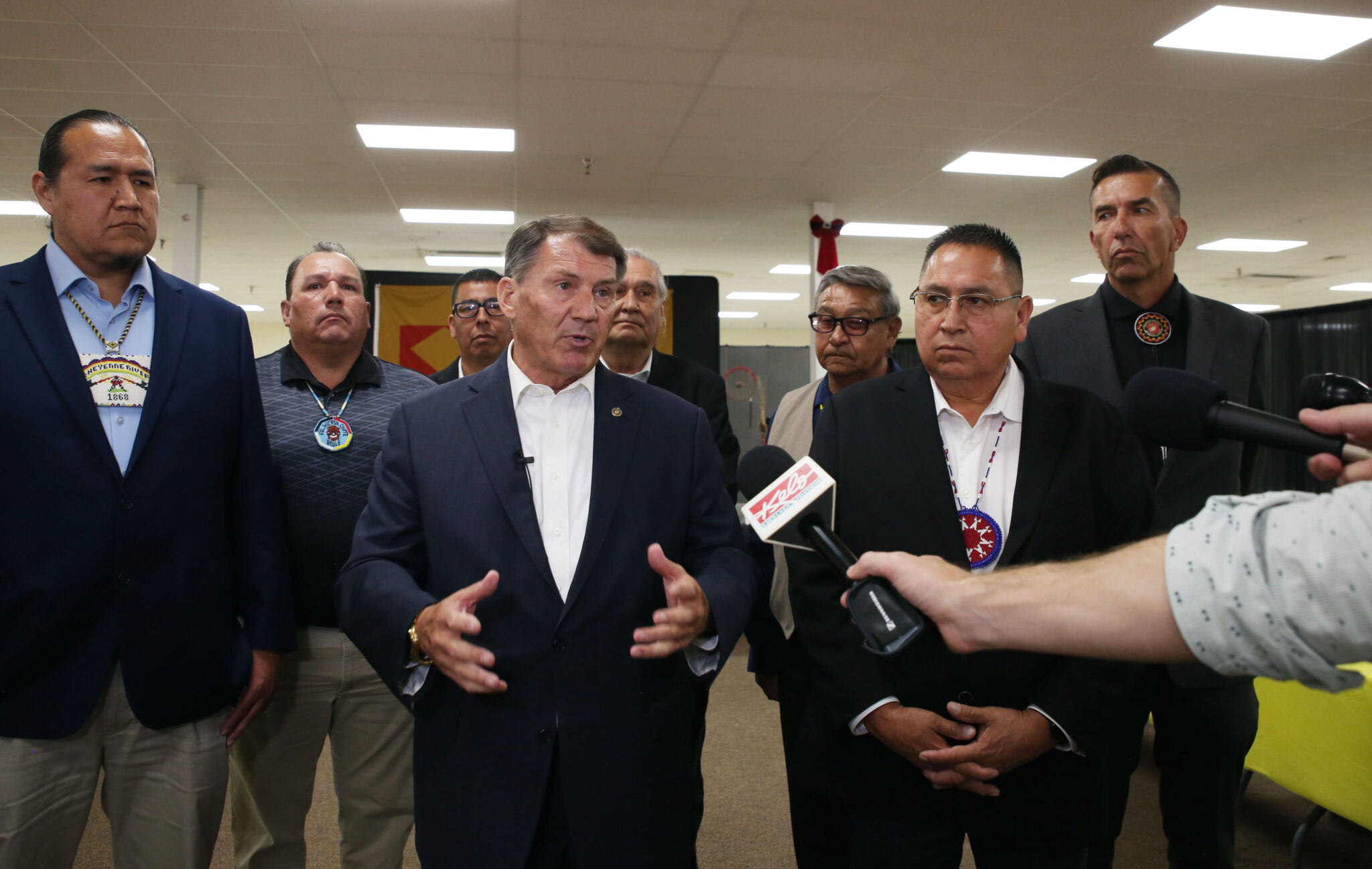
John Hult/South Dakota Searchlight
For the second time in as many years, South Dakota Republican U.S. Sen. Mike Rounds has formally asked the federal Department of the Interior to establish a tribal law enforcement training center in his home state.
This year’s request took the form of a letter from Rounds to Doug Burgum, who served as North Dakota’s governor before ascending to the role of Interior secretary for the Trump administration.
Rounds and U.S. Rep. Dusty Johnson of South Dakota agitated for a regional Bureau of Indian Affairs law enforcement training center last year. Johnson had previously pushed for field hearings that would bring members of Congress to tribal areas to learn the challenges of policing them.
Their advocacy last year dovetailed with the controversy sparked by comments from former South Dakota Gov. Kristi Noem Noem, who’s now secretary of the U.S. Department of Homeland Security. She said Native American reservations in South Dakota were overrun by Mexican drug cartel members and that some tribal leaders were benefiting from it. She also said that unemployment and absent parents had left Native American children bereft of hope.
Leaders of all nine tribes in the state voted to ban her from their lands in the months that followed. Some have since rescinded the bans.
Noem, who said a lack of tribal law enforcement exacerbates public safety problems, worked with Attorney General Marty Jackley to sponsor an additional state-level basic law enforcement training academy session last summer that gave priority to Native American recruits.
Typically, potential Native American officers from South Dakota attend 12 weeks of basic law enforcement training in Artesia, New Mexico — 1,000 miles or more from home.
The 11 recruits trained in Pierre last year were able to get their certification to work in policing in South Dakota, but were also given the chance to remotely complete an additional BIA training module called the Bridge Training Program that would typically take place in New Mexico.
As Noem sparred with tribes rhetorically and pushed to train more tribal officers in South Dakota’s state training academy, the congressional delegation pushed the BIA to establish a regional training center in Pierre.
Such a center, they argued, would allow potential Native American police officers to train during the week and return home to their families on weekends.
Rounds reiterated that point in Monday’s letter to Burgum.
“Many tribal law enforcement leaders believe that the distance to the New Mexico facility is a barrier to recruitment,” Rounds wrote.
He suggested that an existing training center could serve as a satellite training location for tribal policing, and pointed to last summer’s training in Pierre as an “encouraging” sign that such a setup can work.
